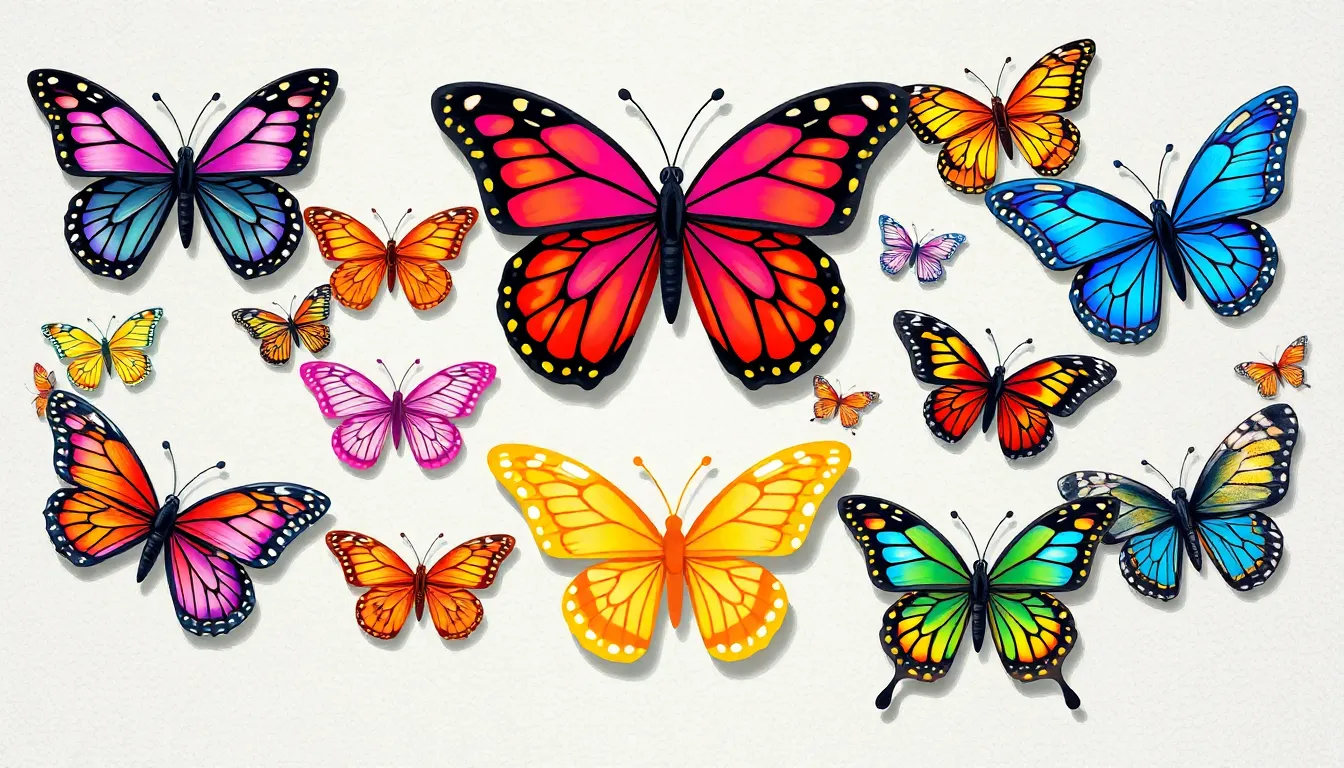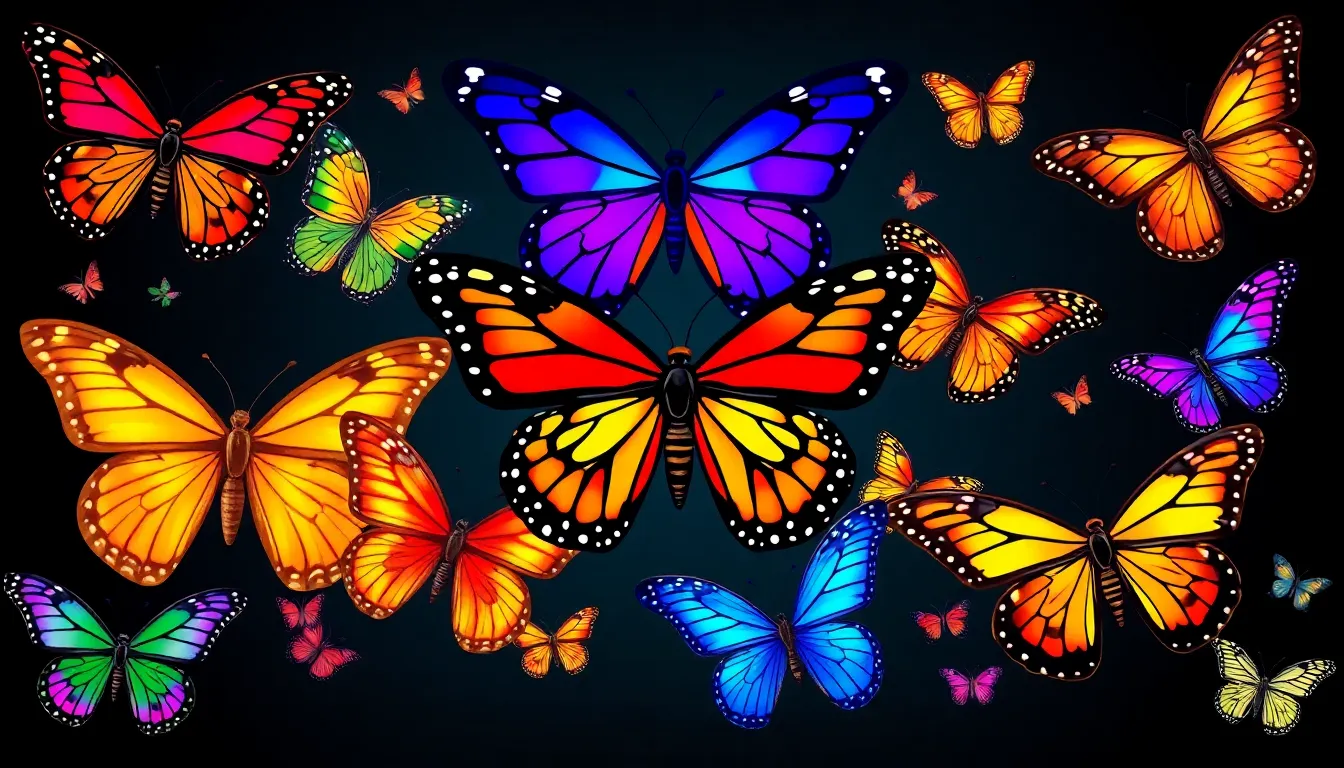Phone:
(701)814-6992
Physical address:
6296 Donnelly Plaza
Ratkeville, Bahamas.

Butterfly pixel art is where creativity flutters to life in a vibrant dance of colors and shapes. Imagine tiny squares coming together to form breathtaking butterflies, each one a unique masterpiece that can brighten any digital canvas. Whether you’re a seasoned artist or just dipping your toes into the pixelated pond, there’s something magical about transforming simple pixels into stunning winged wonders.
Dive into this whimsical world where art meets nostalgia, and discover how these charming creations can add a splash of fun to your projects. From video games to social media posts, butterfly pixel art brings a touch of whimsy that can’t be ignored. So grab your virtual paintbrush and get ready to unleash your inner artist—who knew pixelated butterflies could be so captivating?
Butterfly pixel art represents a vibrant and creative form of digital art. Artists use a grid of small squares or pixels to depict intricate butterfly designs. This style showcases the unique characteristics of butterflies, such as their symmetry and vivid colors.
Creating butterfly pixel art involves selecting a color palette that captures the essence of each butterfly species. Commonly used colors include bright yellows, deep blues, and vibrant reds. Each pixel acts as a building block, forming a larger image that allows for precision and creativity.
This art form appeals to a wide audience, from experienced creators to beginners. Enthusiasts appreciate its nostalgic charm and the simplicity of its design process. It often finds applications in video games, social media graphics, and digital crafts.
Learning butterfly pixel art can begin with simple designs and progress to more complex creations. Basic tutorials often cover color selection, pixel placement, and shading techniques. As skills develop, artists can experiment with different styles and themes, enhancing their artistic repertoire.
Butterfly pixel art often serves as a relaxation technique. Engaging in this creative activity can provide a sense of fulfillment and joy. The art form invites individuals to explore their imaginative potential while enjoying the process of creating beautiful pixelated butterflies.

Pixel art, rooted in early computer graphics, began gaining popularity in the late 1970s. With the introduction of the home computer, artists found a platform to experiment with this unique art form.
Early pixel art emerged from hardware limitations, with systems like the Commodore 64 and the Atari 2600 restricting artists to a limited color palette and resolution. Creators embraced these constraints, focusing on meticulous arrangements of pixels to convey depth and detail. Pixel art captured the hearts of gamers as sprites and backgrounds in classic video games. Pioneering titles like “Space Invaders” and “Pac-Man” showcased the potential of pixel graphics, inspiring future artists to explore and innovate within this medium.
Butterflies in pixel art evolved throughout the decades, reflecting advancements in technology and artistic trends. Early representations featured simple shapes and a handful of colors, highlighting their symmetry and grace. As technology improved, artists began experimenting with more complex designs and varied palettes. Games and digital platforms now feature intricate butterfly pixel art, exhibiting stunning details and animations. Artists continually push boundaries, blending styles and techniques to capture the beauty of butterflies in this vibrant art form.
Creating butterfly pixel art involves precise techniques that enhance the artistry and design process. Each step offers opportunities for creativity and expression.
Selecting appropriate software serves as the foundation for creating pixel art. Programs like Aseprite, Pixie, and Piskel provide features tailored for pixel-based designs. Many artists prefer Aseprite for its user-friendly interface and comprehensive tools. Piskel, being free, is an excellent choice for beginners who want to experiment. Finally, larger platforms like Photoshop can also work, though they may present a steeper learning curve. Understanding the software’s capabilities allows artists to utilize distinct features, enhancing their butterfly designs.
Color palettes play a crucial role in effective pixel art creation. Choosing a limited palette helps maintain a consistent aesthetic while ensuring clarity in designs. Artists often follow the 16-color palette rule to enhance vibrancy and contrast. Familiarity with color theory significantly influences how colors appear together, affecting the overall mood. Exploring existing palettes provides inspiration, as many artists share their creations online. Testing combinations on a small scale can reveal which colors resonate best for butterfly designs. Adapting these palettes to suit personal style can improve visual impact while nurturing creativity.
Exploring various styles showcases the diversity within butterfly pixel art. Artists often choose between traditional and modern aesthetics, each with unique characteristics.
Traditional styles often emphasize simplicity with basic shapes and limited color palettes. Techniques used in this style reflect early pixel art, showcasing the charm of vintage designs. Modern styles incorporate intricate details and expansive color ranges, allowing for richer representations. Many artists blend both styles to create captivating compositions, combining nostalgic elements with contemporary flair. These diverse approaches highlight the versatility of butterfly pixel art and its appeal across different artistic preferences.
Several artists have made significant contributions to butterfly pixel art, each bringing a unique vision. Artists like Limbo have gained recognition for their vivid and dynamic butterfly designs, often featured in games and media. Another noteworthy name, Amasun, showcases intricate patterns and realism within their pixelated creations. Both artists inspire others by pushing the boundaries of this art form, showcasing the potential of pixel art to evolve continually. Their works serve as excellent references for aspiring pixel artists as they explore their creative journeys.
Starting butterfly pixel art can be exciting and fulfilling. Knowing common pitfalls helps in refining skills.
Avoid overcrowding designs with too many colors. Limited color palettes create clarity and harmony in butterfly art. Neglecting symmetry leads to unbalanced designs; maintaining symmetry enhances visual appeal. Beginners often forget proper pixel placement, which can result in loss of detail. Ignoring shading techniques can flatten the art, so practicing shading adds depth. Furthermore, rushing through the design process may diminish overall quality. Taking time allows for careful adjustment and improvement.
Utilizing online tutorials provides valuable insights into techniques and approaches. Websites like YouTube offer a variety of step-by-step guides. Engaging with pixel art communities on platforms like Discord fosters learning and sharing experiences. Forums such as DeviantArt showcase examples and critiques, helping artists gather feedback. Digital art software like Aseprite includes tutorials that enhance understanding of pixel design. Additionally, books about pixel art can serve as great references, providing foundational knowledge and inspiration.
Butterfly pixel art offers a delightful blend of creativity and nostalgia. Its vibrant designs and intricate details allow artists to express themselves while exploring a unique medium. Whether someone is a seasoned artist or just starting out, the process of creating these digital butterflies can be both fulfilling and enjoyable.
By experimenting with color palettes and techniques, individuals can unlock their artistic potential. The journey through pixel art not only enhances skills but also provides a sense of accomplishment. As this art form continues to evolve, it encourages everyone to dive in and share their interpretations of these enchanting creatures. Embracing the charm of butterfly pixel art can inspire endless creativity and joy.